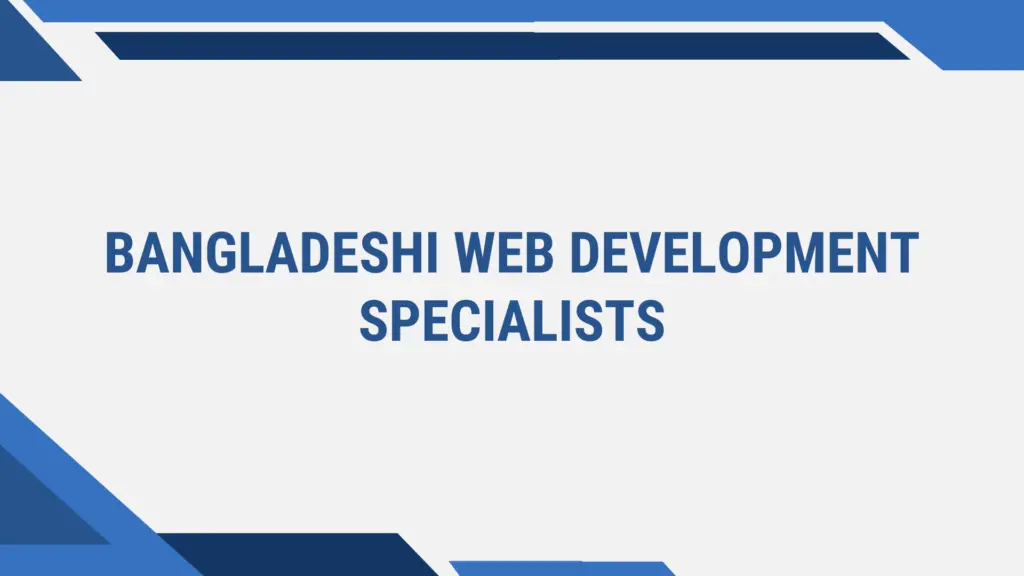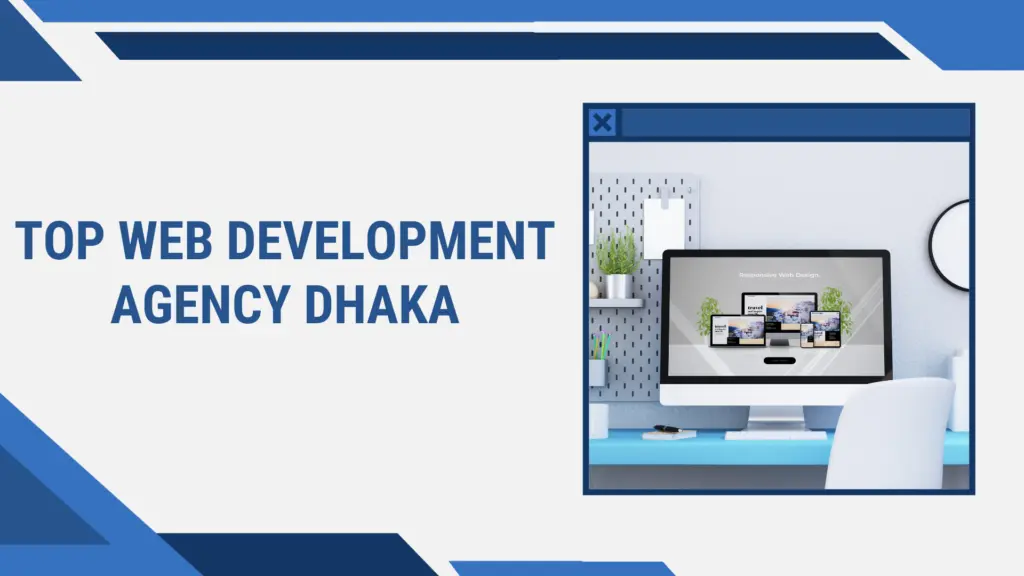Web Development Services In Bangladesh
In the digital age, a strong online presence is essential for businesses and individuals alike. Whether you’re an entrepreneur looking to establish an e-commerce platform, a startup seeking a sleek corporate website, or an established company in need of a website redesign, one thing remains constant: the importance of a website specialist. In Dhaka, the bustling capital of Bangladesh, finding an expert website specialist is crucial to ensuring your online success. In this blog post, we’ll explore the role of the Bangladeshi Web Development Specialists, the web development services they offer, and why working with a Dhaka-based expert is advantageous. Bangladeshi Web Development Specialists In Okriya, A website specialist is a skilled professional who possesses in-depth knowledge and expertise in web development. They are not just designers; they are architects of the digital landscape, crafting websites that not only look stunning but also function seamlessly. Their role encompasses a wide range of responsibilities, including: 1. Designing Visually Appealing Websites Website specialists have a keen eye for design. They understand the importance of creating visually appealing websites that leave a lasting impression on visitors. From choosing color schemes to designing user-friendly layouts, they ensure that every element of the website contributes to an exceptional user experience. 2. Developing Functionality While aesthetics are essential, functionality is equally crucial. Website specialists are proficient in various programming languages, including HTML, CSS, JavaScript, and more. They use these languages to build websites that perform flawlessly, whether it’s an e-commerce platform, a blog, or a corporate site. 3. Ensuring Responsiveness In today’s mobile-dominated world, having a responsive website is non-negotiable. Website specialists ensure that your site adapts seamlessly to various devices and screen sizes, guaranteeing that users have an optimal experience on smartphones, tablets, and desktops. 4. Search Engine Optimization (SEO) A website is only effective if it can be found by your target audience. Website specialists understand the principles of SEO and implement strategies to improve your site’s visibility on search engines like Google. This includes optimizing content, meta tags, and site structure. 5. User Experience (UX) and User Interface (UI) Design User experience is at the core of web development. Specialists focus on creating intuitive navigation, clear calls to action, and user-friendly interfaces to ensure that visitors can easily find what they’re looking for and take desired actions. 6. Security Cybersecurity is a growing concern. Website specialists prioritize the security of your website, implementing measures to protect against data breaches, malware, and other online threats. Bangladeshi Web Development Specialists Which You Need Now that we’ve established the vital role of a website specialist( Website Specialist in Dhaka), let’s delve into the array of web development services offered in Dhaka. Whether you’re a business owner, entrepreneur, or individual looking to establish your online presence, these services can help you achieve your goals: 1. Custom Web Development Every business is unique, and your website should reflect that. Dhaka-based website specialists offer custom web development services tailored to your specific needs and requirements. Whether you need a complex e-commerce platform or a simple blog, they can bring your vision to life. 2. E-Commerce Web Development The world of online retail is booming, and Dhaka is no exception. E-commerce web development specialists in Dhaka can create robust, secure, and user-friendly online stores that enable you to sell products or services to a global audience. 3. Responsive Web Design With the majority of internet traffic coming from mobile devices, having a responsive website is paramount. Dhaka’s web development experts ensure that your site looks and functions flawlessly on all devices, providing a superior user experience. 4. Mobile App Development In addition to websites, many web development agencies in Dhaka offer mobile app development services. Whether you need an Android or iOS app, these specialists can turn your ideas into reality. 5. Content Management Systems (CMS) Content is king in the online world. CMS solutions like WordPress, Drupal, and Joomla are popular choices for managing website content. Dhaka-based specialists can help you choose the right CMS and set it up for your needs. 6. SEO Services Getting your website noticed by search engines and potential customers is crucial. Dhaka’s web development agencies offer SEO services to improve your site’s search engine ranking and drive organic traffic. 7. Website Maintenance and Support Your website needs ongoing care to stay secure and up to date. Dhaka’s website specialists offer maintenance and support services, ensuring that your site remains operational and free from technical glitches. Benefits of Working with a Bangladeshi Web Development Specialists Now that you’re familiar with the services offered, let’s explore the advantages of collaborating with a Website Specialist in Dhaka. 1. Local Expertise A Dhaka-based specialist understands the local market, culture, and business landscape. This insight allows them to create websites that resonate with the target audience in Bangladesh. 2. Improved Communication Proximity matters. Working with a local specialist facilitates better communication and project management. You can meet face-to-face, discuss ideas in person, and ensure that your requirements are met effectively. 3. Cultural Understanding Cultural nuances are important in web design. Website Specialists in Dhaka(Website Specialist in Dhaka) can incorporate cultural elements into your website design, making it more relatable to your target audience. 4. Faster Turnaround Local specialists can often provide a faster turnaround time for your projects, ensuring that your website is launched on schedule. 5. Support and Accessibility Should you encounter any issues or require updates after your website is live, a local specialist is readily accessible for support and maintenance.in Dhaka.





